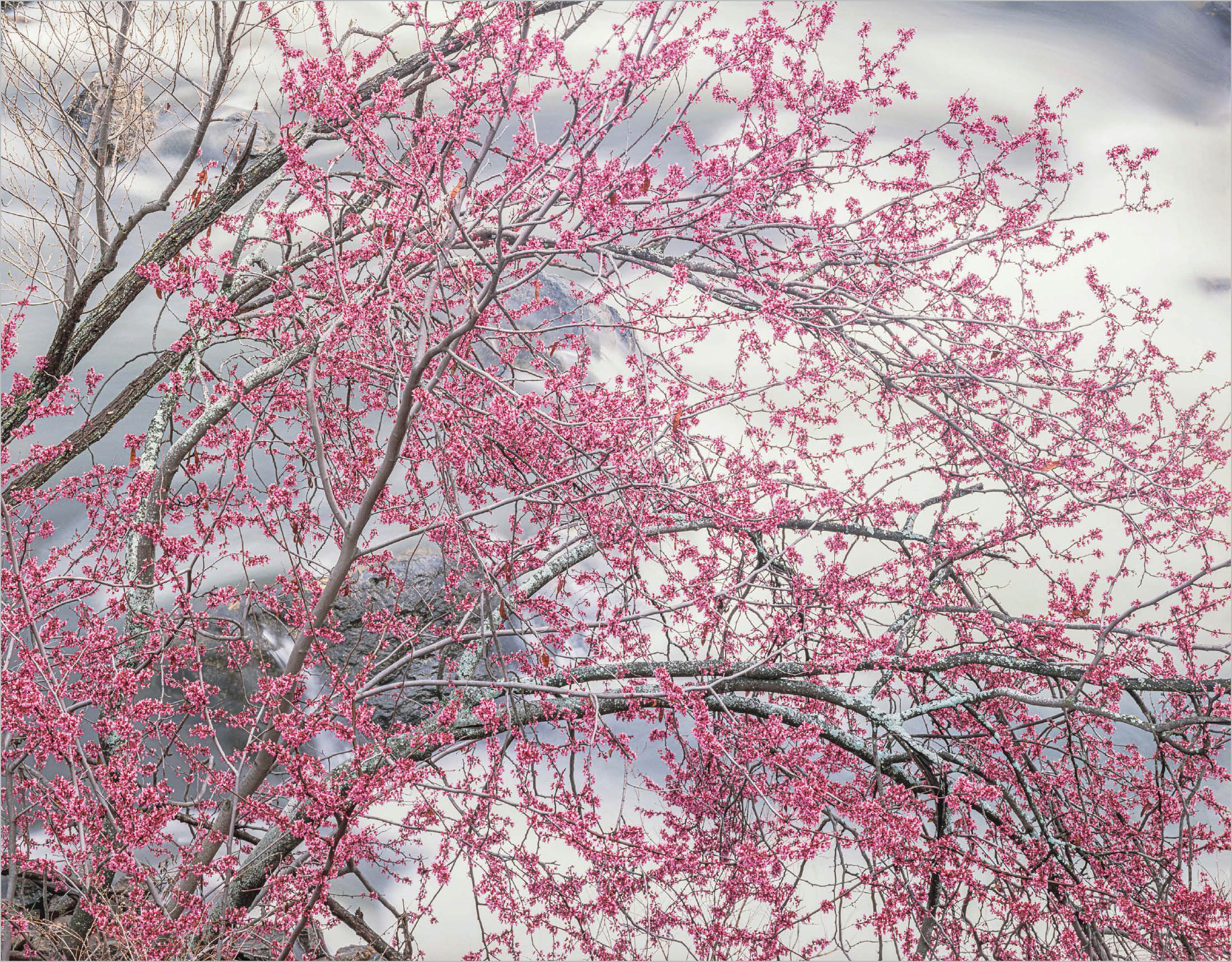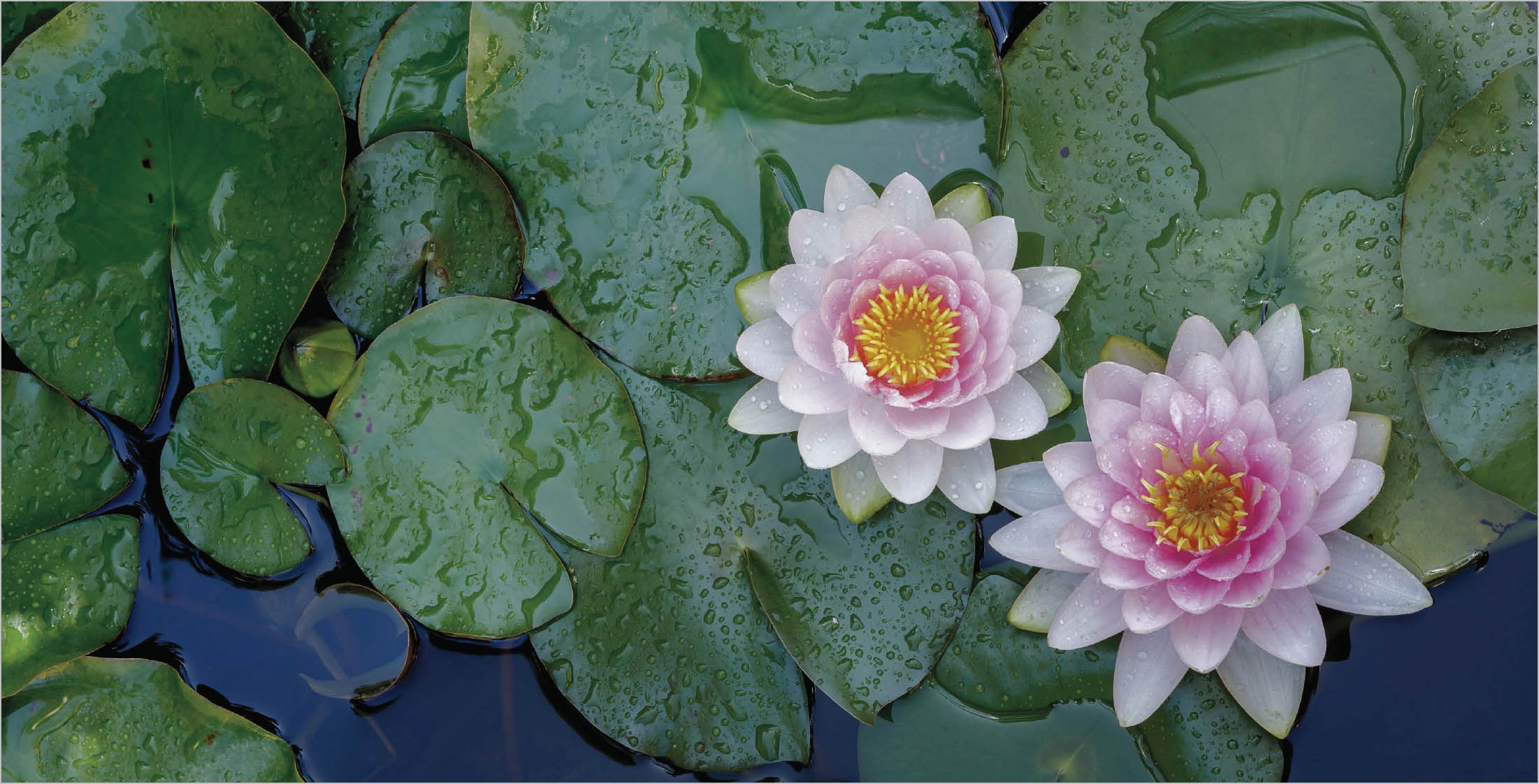SPRING IN THE CANYON
ALWAYS TRY TO IMPROVE
On Earth Day several years ago, my daughter and I visited the nearby Merced River Canyon, where I lived for twenty years. Although it was a little late in the blooming season, there were still a few beautiful redbud trees, lupine, and poppies to enjoy. It felt great to return to my “home” canyon, and it brought back many memories.
I love the change of seasons there, as subtle as they are compared to most places, and the spring season is my favorite. Most years, the flowers start blooming in February, and they finally all turn brown in May. Besides the flowers, the river is exhilarating in its moods, especially during the high waters of spring. From my El Portal home, I could see the river from my living room only in the height of the spring runoff. Its rumbling sound was very loud and soothing at night.
I’ve made many images in the Merced River Canyon over the years, and one of my favorites is one of a special tree overhanging the river, shown on the previous spread. I’ve also included my previous favorite redbud image from the Merced River Canyon, photographed with a 4x5 camera in 1989.
Back at home, I edited the new images in the latest version of Adobe Lightroom. I had dozens of similar frames to assess. I find that this takes me several days to cull my images down to the best few. It is hard to imagine not having Lightroom to manage this process. Using the rating stars, I mark the images that show the best sharpness. Capturing sharp images was especially difficult with these branches hanging over the roaring river! I used the Compare function of Lightroom to judge one image next to another, seeing the difference between the overall images, as well as comparing them at 100%. This helped me find which frames were sharpest throughout.
Once I narrowed my collection down to the sharp images, I looked carefully at the effect of the various shutter speeds I had tried on the rapids. The two culling steps narrowed my selected images down to ten. The next phase of my workflow makes use of Lightroom’s Survey View tool. I selected all ten of the highest-rated images to see them on-screen at one time, then culled down to the final image or two. My final selection showed the best sharpness, plus the most graceful flow of water in relation to the redbud branches.
As I compared the subtleties of the lighting on the water and redbud in each frame, I could also see stronger backlight in the leaves and flowers. These differences are hard to see in a small print or an online JPG, but I often make large prints for my clients in which these nuances stand out clearly. I am always in pursuit of excellence.
I finally found my favorite photograph, and I started processing it in Lightroom. Although I use Photoshop for final finishing and printing, Lightroom has become a more and more powerful post-processing tool. Many of the global adjustments I used to make in Photoshop, I now make in Lightroom.
I sent my new redbud image file to Photoshop where I worked with layer masks. There were two highlight areas that needed separate degrees of refinement, so I used two Curves adjustment layers to pull out the subtle separation of tones in the white rapids in the middle of the frame, and a similar adjustment in the reflected light in the upper right. For my final master file, I have four adjustment layers that allow me to make changes at any time. In fact, I’ve already tweaked one of the curves layers to further improve the image.
I love the newer image, even more than my 4x5 Redbud and Merced River photograph, which has been in my portfolio for thirty-plus years. This is where the rubber meets the road in terms of artistic growth: to challenge myself to raise the bar above a long-time favorite. It’s not always the case, but this time I succeeded!
Redbud and Merced River | Merced River Canyon, California | 1989
Lilies | Ahwahnee, California | 2012

